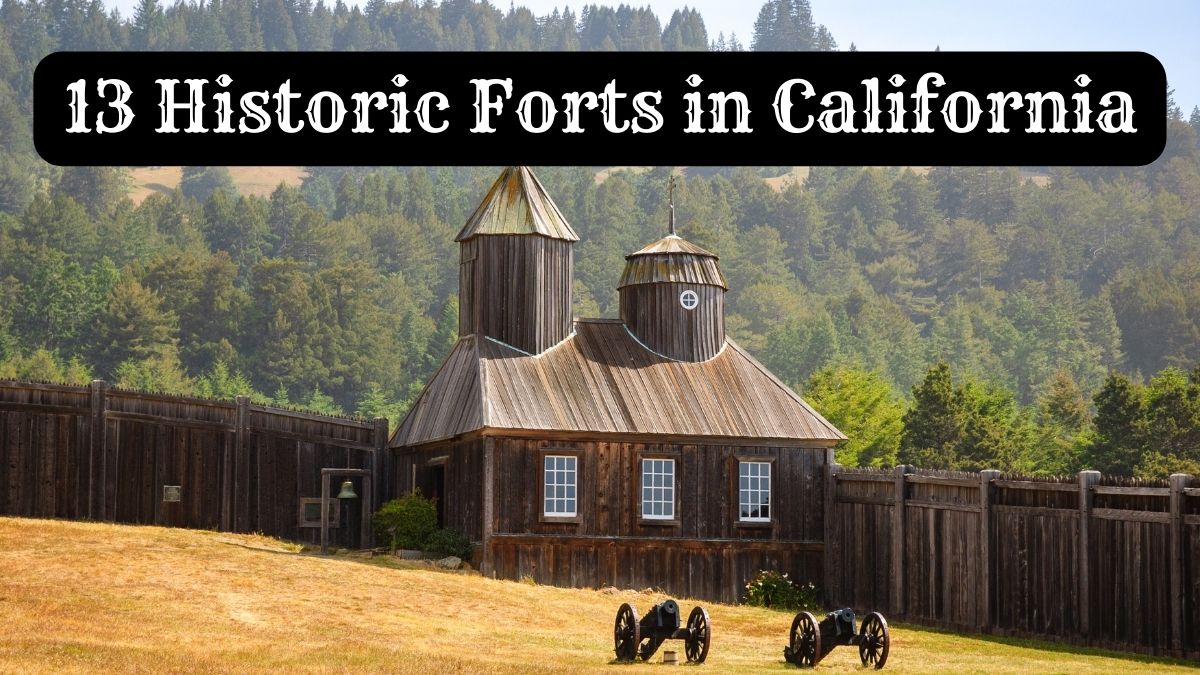California’s landscape is dotted with historic forts, each telling a unique story of the state’s rich past.
From pivotal roles in the Civil War to guarding the sandy beaches of San Francisco Bay, these forts have seen significant historical events.
In this article, Historic Forts in California, we explore some of these historic sites, delving into their histories and the roles they played in shaping California.
10 Historic Forts in California
| 1. Fort Point | 8. Fort Tejon |
| 2. Presidio | 9. Fort Humboldt |
| 3. Sutter’s Fort | 10. Fort MacArthur |
| 4. Fort Ross | 11. Presidio of Monterey |
| 5. Fort Bragg | 12. Fort Bidwell |
| 6. Fort Baker | 13. Fort Crook |
| 7. Fort Moore |
1. Fort Point
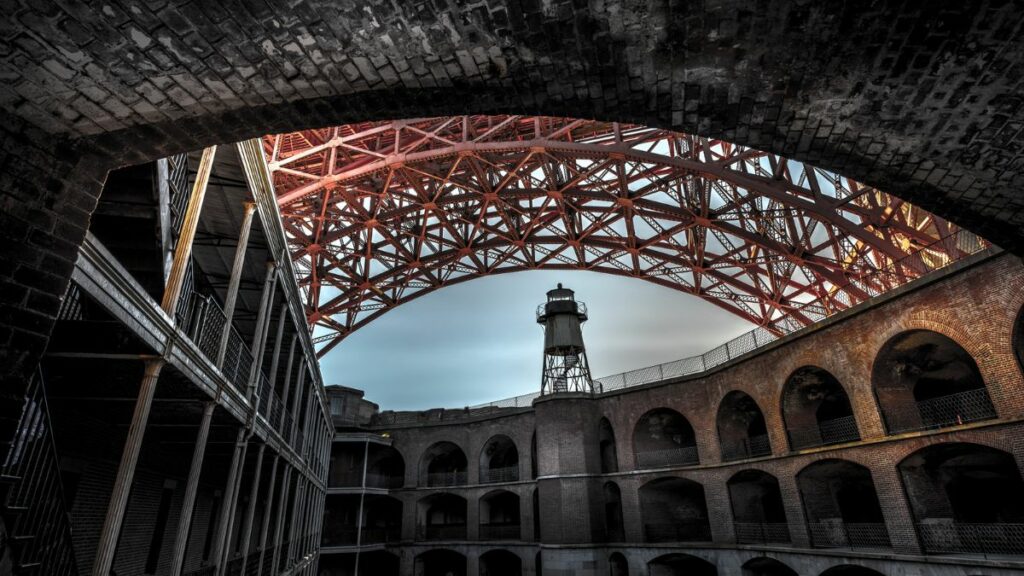
Overlooking the Golden Gate Bridge, the Fort Point National Historic Site in San Francisco, California, is a majestic fortification offering a unique glimpse into American military history.
It holds significant historical value due to its role in defending San Francisco Bay and its architectural grandeur.
Fort Point was built in the mid-19th century to protect San Francisco Bay from potential naval attacks.
Its design, influenced by European military engineering, features classic military architecture of the period with thick masonry walls capable of withstanding cannon fire.
This fortification, designed to shield San Francisco from Confederate or foreign naval assaults, was particularly crucial just before and during the Civil War.
Interestingly, while it was a strategic deterrent, Fort Point never engaged in direct battle during the Civil War.
People Involved and Major Events
The creation and operation of Fort Point involved several U.S. Army engineers, architects, and military personnel. These individuals were responsible for its construction, design, and operational readiness.
Following the Civil War, the importance of Fort Point diminished due to advancements in military technology. The 20th century brought significant changes with the construction of the Golden Gate Bridge.
The fort was neglected and nearly demolished but was ultimately preserved for its historical importance.
Preservation and Current Status
In 1970, recognizing its historical significance, Fort Point was declared a National Historic Site. Today, it serves as a museum, open to the public, offering insights into military history and architecture.
It’s located at the tip of the San Francisco Peninsula, providing breathtaking views of the Golden Gate Bridge and the San Francisco Bay.
The site is a popular destination for history enthusiasts and offers guided tours and educational programs, making it an integral part of San Francisco’s cultural and historical landscape.
2. Presidio of San Francisco

The Presidio, nestled in Marin County, has been a pivotal military post under various sovereignties. Its strategic location and historical transformations have become a key feature in Northern California’s military and cultural history.
Originally established to guard against threats during the Mexican-American War, the Presidio has witnessed numerous changes in control and purpose.
With its rich history, this military post has seen the ebb and flow of different eras and rulers, making it a microcosm of the broader historical shifts in the region.
Presidio has played significant roles in various military campaigns and conflicts throughout its history. It was a crucial base during the Mexican-American War, providing strategic advantage and defense capabilities.
In the subsequent years, its importance grew as it adapted to the changing military needs and technologies.
Cultural Impact and Transformation
Over the years, the Presidio has evolved beyond its military functions.
Its transformation into part of the Golden Gate National Recreation Area marked a significant shift from a solely military installation to a cultural and recreational landmark.
This change has allowed the Presidio to become more integrated into Northern California’s civilian life and history, offering a space for historical reflection and contemporary enjoyment.
Today, the Presidio stands not just as a former military post but as a vibrant part of the Golden Gate National Recreation Area.
It attracts visitors from all over, drawn to its historical significance, scenic beauty, and cultural offerings.
As a blend of natural beauty and historical architecture, the Presidio offers a unique glimpse into the past while serving the present-day needs of the community.
3. Sutter’s Fort
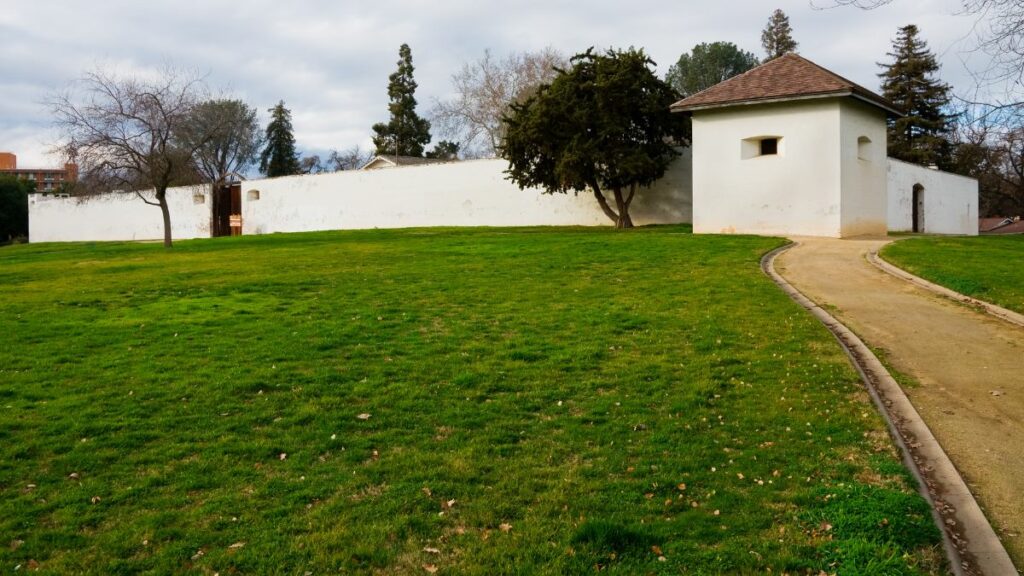
Sutter’s Fort State Historic Park in Sacramento County is a significant historical site linked to the California Gold Rush.
Founded by John Sutter the year following the discovery of gold at Sutter’s Mill, this historic fort became a pivotal location during one of the most transformative periods in American history.
John Sutter established the fort as a trade and agricultural hub, which soon became integral to the Gold Rush era.
The discovery of gold at Sutter’s Mill, near the fort, ushered in an influx of migrants.
Sutter’s Fort played a crucial role in welcoming these migrants, providing them with a first point of contact and support as they sought fortunes in the goldfields of California.
Importance as a Cultural and Economic Center
During the peak of the Gold Rush, Sutter’s Fort became a bustling center of activity. It was a refuge for gold seekers and a vital regional trade and agriculture center.
The fort facilitated exchanges between different cultural groups and acted as a linchpin in the area’s burgeoning economy.
Preservation as a Historical Site
Recognizing its historical significance, Sutter’s Fort was preserved as a State Historic Park. Today, it offers self-guided tours to visitors, allowing them to step back in time and experience a piece of California’s rich history.
The park showcases original items from the era and reconstructed parts of the old fort, providing an immersive historical experience.
The fort now serves as an educational and cultural resource, drawing visitors keen to learn about California’s early history and the Gold Rush era.
Sutter’s Fort State Historic Park preserves the stories and experiences of those who passed through its gates during a pivotal time in American history.
This is achieved through its preservation and the presentation of historical artifacts and reconstructions.
4. Fort Ross
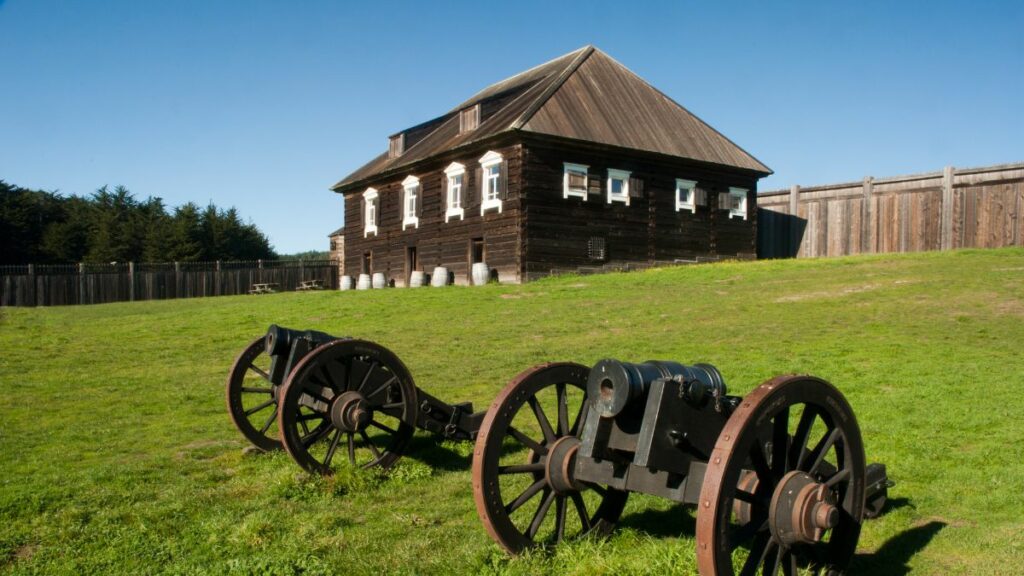
Fort Ross, located along the rugged Pacific coastline, was a prominent Russian-American Company settlement from 1812 to 1842.
Its role in California’s early history is marked by its contributions to trade, agriculture, and cultural exchanges, making it a vital piece of the historical tapestry of the region.
Founded in the early 19th century by the Russian-American Company, Fort Ross was primarily established as a trade and agricultural center.
Its strategic location along the coast facilitated its growth as a hub of economic activity. The fort played a crucial role in the region’s development, fostering trade relationships and agricultural advancements.
Cultural Exchange and Interactions
One of the most notable aspects of Fort Ross was its role in promoting cultural interactions. The Russian settlers at the fort interacted extensively with the native Kashaya people and Spanish colonists.
These interactions led to a rich cultural exchange, influencing the region’s social, economic, and cultural dynamics.
Fort Ross Today
Today, Fort Ross is an important historical site preserved to educate visitors about this unique period in California’s history.
The site offers a glimpse into the lives of the early settlers, showcasing the daily routines, challenges, and achievements of those who lived and worked at the fort.
Fort Ross provides educational and recreational opportunities for visitors. Various exhibits and preserved structures offer insights into the settlement’s historical significance.
Visitors can explore the fort’s buildings, artifacts, and surroundings, gaining a deeper understanding of the early 19th-century life along the California coast.
5. Fort Bragg
Fort Bragg, established in 1857, is a distinct part of California’s history as a remote military outpost. Its creation was primarily intended to support and protect the Mendocino Indian Reservation during the state’s formative years.
The primary purpose of Fort Bragg was to provide security and assistance to the Mendocino Indian Reservation.
This role was crucial in the context of the broader dynamics and challenges faced by Native American communities in California during the mid-19th century.
The fort’s presence signified the government’s effort to manage and oversee interactions between native populations and European settlers.
Fort Bragg was situated along the Noyo River and had a strategic advantage due to its easy access to the Pacific Ocean.
This positioning made it an essential point for coastal defense, enabling the fort to play a vital role in the security and management of the region’s coastal areas.
Abandonment and Transformation
Despite its initial significance, Fort Bragg was eventually abandoned in the 1860s as the needs and priorities of the region changed.
The military necessity of the fort diminished, leading to its eventual closure and the transition of the area to civilian use.
Today, the site of Fort Bragg is renowned not for its military past but for its natural beauty and appeal as a tourist destination.
The area’s rugged beauty, along with its proximity to the Noyo River and the Pacific Ocean, attracts visitors from around the world.
The region offers a blend of historical significance and natural attractions, making it a unique destination for those interested in California’s history and its stunning landscapes.
6. Fort Baker

Fort Baker, strategically positioned at the entrance to the San Francisco Bay, has been a critical component of the area’s coastal defense system from the late 19th century through World War II.
Its role in safeguarding the bay and its transformation into a public park highlight its historical and contemporary significance.
During its active years, Fort Baker was essential in the coastal defense strategy, especially during periods of heightened military tension.
It worked with nearby Fort Point, Fort Winfield Scott, and Fort McDowell, forming a formidable defense network around the San Francisco Bay.
This network was particularly crucial during World War II, when the United States was significantly concerned about threats from the Pacific.
Fort Baker’s location, south of Fort Point and across the bay from Fort Winfield Scott and Fort McDowell, was carefully chosen for its strategic vantage point.
This positioning allowed it to guard the entrance to the San Francisco Bay effectively, a vital gateway for maritime traffic and military operations on the West Coast.
Transition to a Public Park
After World War II, the strategic importance of coastal forts like Fort Baker diminished due to advances in military technology and changes in defense strategies.
Consequently, Fort Baker was decommissioned from military use and has since been repurposed as a picturesque park.
This transformation has allowed the site to serve a new role in the community, blending its historical significance with recreational and educational opportunities.
Today, Fort Baker offers visitors a chance to engage with both the natural beauty and historical legacy of the area.
The park provides recreational activities, including hiking and picnicking, alongside opportunities to learn about the fort’s military history.
The preservation of historical structures and the integration of educational resources make Fort Baker a valuable site for understanding the region’s past while enjoying its present-day allure.
7. Fort Moore
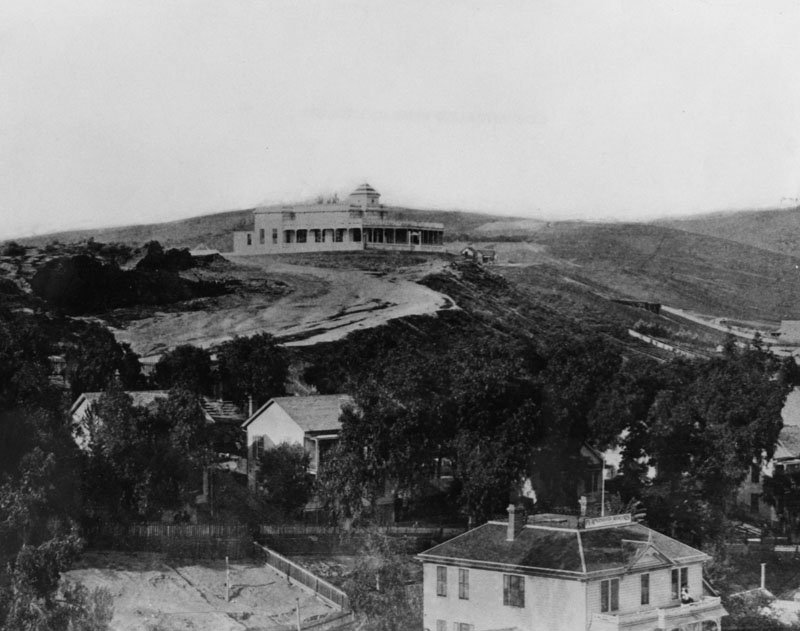
Fort Moore, one of the two historic U.S. Military Forts in Los Angeles during the Mexican–American War, was a significant military installation situated above the junction of the Hollywood Freeway and Broadway.
Today, it is memorialized by the Fort Moore Pioneer Memorial, a stone mural on Hill Street.
In August 1846, U.S. naval forces under Commodore Robert F. Stockton arrived in Los Angeles and raised the U.S. flag without opposition, establishing a small barricade on Fort Hill.
The martial law imposed by Captain Archibald H. Gillespie led to an uprising among Californios and Mexicans, culminating in the siege of Los Angeles.
Establishment and Naming
To secure the area from future attacks, U.S. forces began constructing a defensive structure in January 1847, later named Fort Moore in July of the same year.
This fortification, designed for six cannons, was dedicated to Captain Benjamin D. Moore, who was killed in the Battle of San Pasqual.
Decommission and Transformation
Lieutenant William T. Sherman ordered the garrison withdrawn in 1848, and by 1849 the fort was abandoned.
It was officially decommissioned in 1853. In the years following, the site was leveled and transformed into a public playground.
8. Fort Tejon
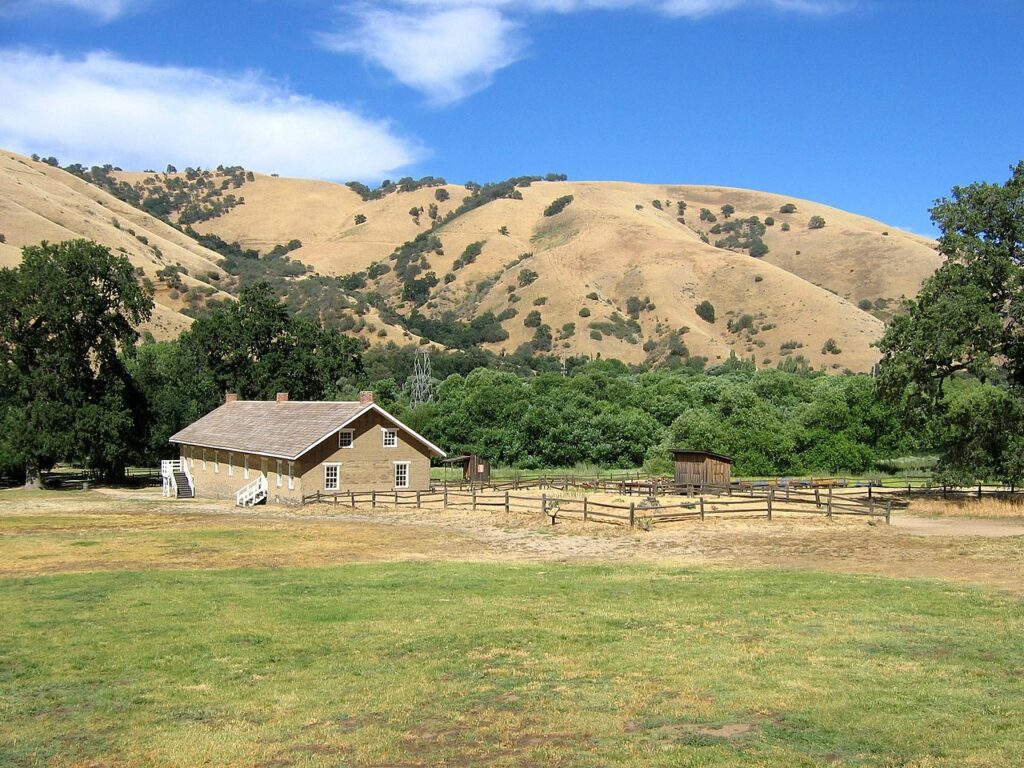
Fort Tejon, situated in Grapevine Canyon between the San Emigdio and Tehachapi Mountains in Kern County, California, was a significant United States Army outpost active from 1854 to 1864.
The fort’s primary mission was to suppress stock rustling and protect settlers from attacks by Californios (pre-statehood residents) and Native American tribes, including the Paiute and Mojave.
It also monitored the nearby Emigdiano, related to the Chumash, who were generally cooperative with European-American settlers and the U.S. Army.
Establishment and Civil War Role
Fort Tejon was established in 1854 at the urging of Edward Fitzgerald Beale, Superintendent of Indian Affairs in California.
It served as the headquarters of the First U.S. Dragoons until the outbreak of the American Civil War, when these troops were transferred east.
The fort was then occupied by California volunteer troops, playing a role during the Civil War until its abandonment in 1864.
Fort Tejon was also a stagecoach station on the Butterfield Overland Mail route and the western terminus of the experimental U.S. Camel Corps, which attempted to use camels for carrying supplies across the Southwest.
Preservation as a State Historic Park
Fort Tejon State Historic Park, established in 1940 and now listed on the National Register of Historic Places, features restored historic buildings, including barracks and the commanding officer’s quarters.
The park also hosts exhibits on dragoon life and Civil War reenactments, providing insights into the military and daily life at the fort.
9. Fort Humboldt
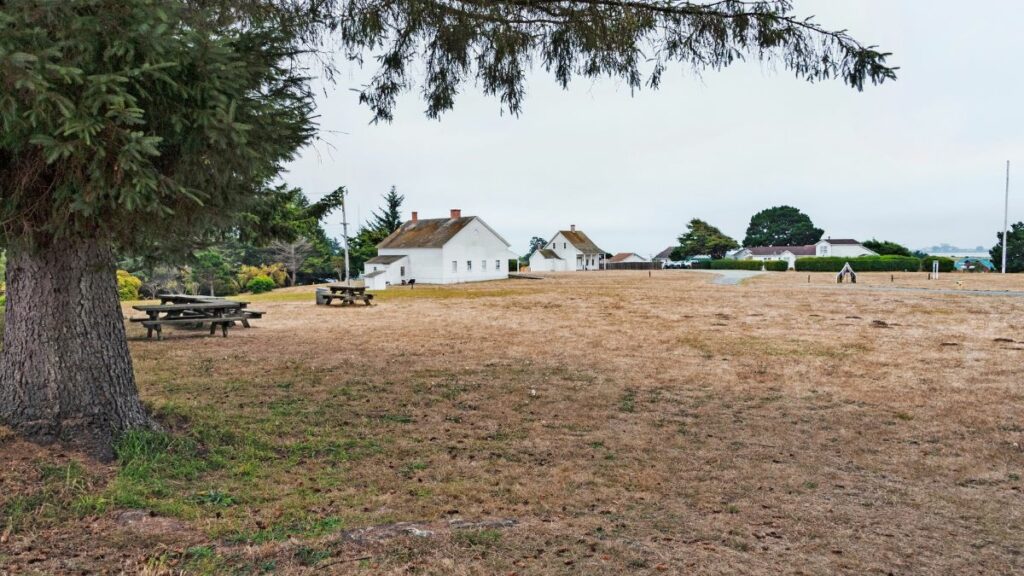
Fort Humboldt, now a California state park located in Eureka, California, was a crucial U.S. Army fort active from 1853 to 1870.
Overlooking Humboldt Bay, it played a significant role in the interactions between European Americans and Native Americans in the mid-19th century.
The fort was established on January 30, 1853, primarily as a buffer between Native Americans, gold-seekers, and settlers, under the command of Brevet Lieutenant Colonel Robert C. Buchanan.
Its strategic location on a bluff overlooking Humboldt Bay was critical for protecting local inhabitants and serving as a supply depot for other military posts in California and Oregon.
Conflicts and Historical Events
Fort Humboldt witnessed several skirmishes between settlers and local tribes, with notable conflicts including the Red Cap War.
The infamous Indian Island Massacre of the Wiyot people in February 1860 also occurred during this period. These events reflected the tensions and challenges of that era.
The fort was a posting for several notable military figures, including a young captain Ulysses S. Grant in 1854. Other significant figures who served at the fort later played critical roles in the American Civil War.
Preservation and Current Status
Fort Humboldt was registered as a California Historical Landmark in 1935 and designated a State Historic Park in 1963.
Today, it houses displays that interpret its military history, the interactions between European Americans and Native Americans, and the local logging and railroad history.
The park contains various historical artifacts, including a fully functional Steam Donkey engine and an authentic Native American dug-out canoe.
10. Fort MacArthur
Fort MacArthur, a former United States Army installation located in San Pedro, Los Angeles, California, played a significant role in American military history, especially during World War II.
Named after Lieutenant General Arthur MacArthur, whose son Douglas MacArthur would later command American forces in the Pacific during World War II, the fort has a rich history of defending the Los Angeles area.
The site was initially designated as a military reservation in 1888 by President Grover Cleveland to improve the defenses of the expanding Los Angeles harbor area.
Fort MacArthur was formally established on October 31, 1914, and functioned as a training center during World War I. The installation of large gun batteries for harbor defense in 1917 marked its growing importance.
Role in World War II
During World War II, Fort MacArthur was equipped with a Harbor Entrance Command Post and a Harbor Defense Command Post.
Its strategic location was vital for the defense of shipbuilding factories, aircraft factories, the Huntington Beach Oil Field, and the San Pedro Bay harbor. This made the Los Angeles metropolitan area a potential target for enemy attack.
Decommissioning and Preservation
By the end of World War II, the large guns at Fort MacArthur were decommissioned, with the last being removed in 1948.
Battery Osgood-Farley, a coastal defense gun emplacement at the fort, is a well-preserved example and was placed on the National Register of Historic Places in 1976.
In the early years of the Cold War, Fort MacArthur played a crucial role as part of the West Coast’s anti-aircraft defenses.
It was home to the 47th Anti-Aircraft Artillery Brigade, and a Nike surface-to-air missile battery was activated at the fort in 1954, remaining in service until the early 1970s.
11. Presidio of Monterey

The Presidio of Monterey (POM) is located in Monterey, California.
It has a rich history stretches from the Spanish colonial era to its current role as an active U.S. Army installation, home to the Defense Language Institute Foreign Language Center (DLI-FLC).
It stands as the only presidio in California with an ongoing military presence.
Originally a Spanish fortification, the Presidio transitioned to American control in 1846 during the Mexican–American War when Commodore John D. Sloat claimed it for the United States.
It was then moved to its location overlooking the harbor and renamed Fort Mervine.
Through the early 20th century, the Presidio evolved, hosting various military schools and expanding its land holdings, which later became Fort Ord.
Current Role
Post World War II, the Presidio underwent significant transformation.
In 1946, it became the site of the Military Intelligence Service Language School, which evolved into the Army Language School and later the Defense Language Institute.
In 1976, it was renamed the Defense Language Institute Foreign Language Center. This made it the primary center for foreign language instruction for the Defense Department, serving all branches of the military and other government agencies.
12. Fort Bidwell
Situated in the remote region of Modoc County, Fort Bidwell, although less prominent in mainstream history, was an important site during the Indian Wars. It played a crucial role in the operations of the United States Army in Northern California.
Established in 1865, Fort Bidwell was one of seven forts commissioned to protect the trail from Red Bluff, California, to the Owhyhee Mines of Idaho.
The Army chose a site near Fandango Pass at the base of the Warner Mountains.
The fort became a strategic base for operations in various conflicts, including the Snake War, the Battle of Infernal Caverns, the Modoc War, and the Bannock and Nez Perce campaigns.
It continued to be staffed by the Army until 1890, even as traffic on the Red Bluff route declined.
Present Status
Today, Fort Bidwell is recognized as California Historical Landmark #430, preserving its legacy and importance in U.S. military history.
13. Fort Crook
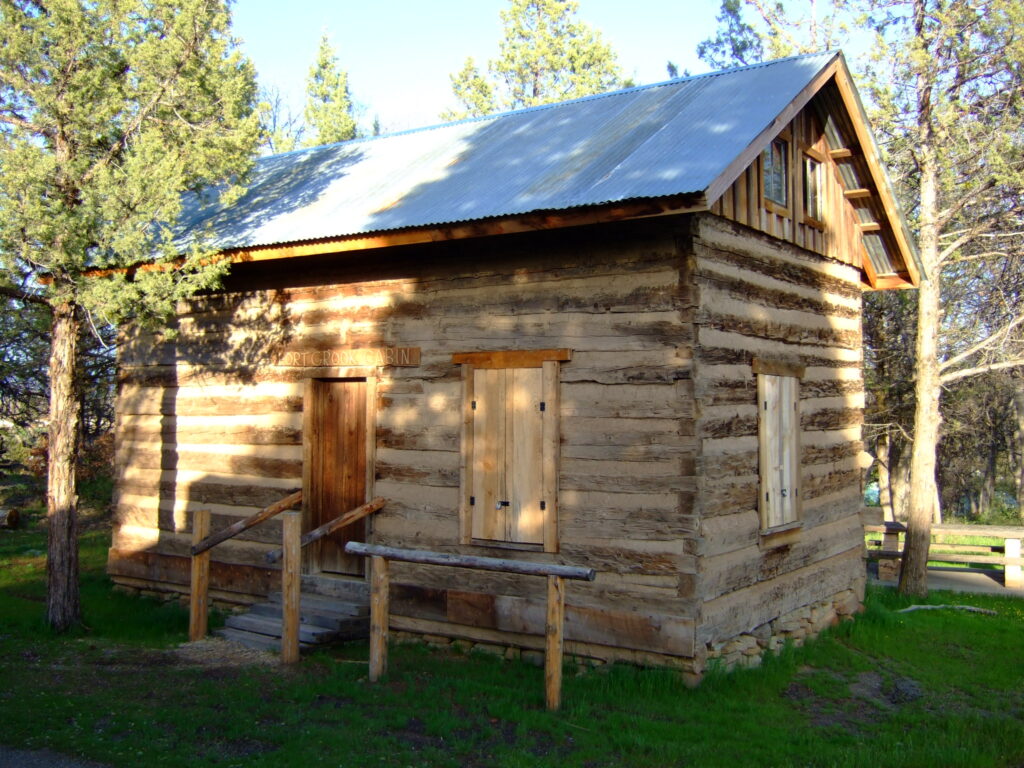
Established in the 1850s in Shasta County, Fort Crook emerged as a significant military post during the conflicts with Native Americans.
Initially named Camp Hollenbush, it played a crucial role in the operations of the United States Army in Northern California.
The U.S. Army post, first established as Camp Hollenbush in 1857, was located northeast of Fall River Mills, California.
Captain John W.T. Gardiner led a detachment of soldiers from the 1st U.S. Dragoons and the 4th U.S. Infantry to establish the post.
It was later renamed Fort Crook in honor of 1st Lieutenant George Crook of the 4th U.S. Infantry, known for his role in the Pitt River Expedition of 1857, where an Indian arrow wounded him.
During the American Civil War, California Volunteers garrisoned Fort Crook.
The post was active in several military actions, including a scout from Fort Crook to Round Valley and skirmishes with the Achomawi in the Upper Pit River Valley in 1861.
Abandonment and Preservation
The U.S. Army abandoned Fort Crook in 1869, and the land was returned to the public domain in 1881. Although no remains exist at the original site, the Fort Crook Historical Society placed a historical marker in Fall River Mills in 1934.
The Fort Crook Museum in Fall River Mills, which includes a restored cabin from the original fort site, offers a window into this turbulent period in Californian history and preserves the legacy of this significant military post.
Related: Army Forts in California
Conclusion – Historic Forts in California
These forts, ranging from the strategically placed Fort Point at the entrance of San Francisco Bay to the secluded Fort Bidwell in Northern California, provide a comprehensive tour of the state’s varied and evolving past.
They represent more than just historical landmarks; they are emblematic of the significant shifts in California’s history, encompassing eras from the Gold Rush to World War II.
Each fort, with its distinctive story and enduring legacy, contributes to California’s complex and multifaceted narrative of history.
Thank you for reading, and I hope you enjoyed the article. If you have visited any of these forts, we would love to hear about your experience in the comments section below.

Cory is a website owner and content creator who enjoys fishing, history, coin collecting, and sports, among other hobbies. He is a husband and father of four.
Romans 15:4 For whatever was written in former days was written for our instruction, that through endurance and through the encouragement of the Scriptures we might have hope.

